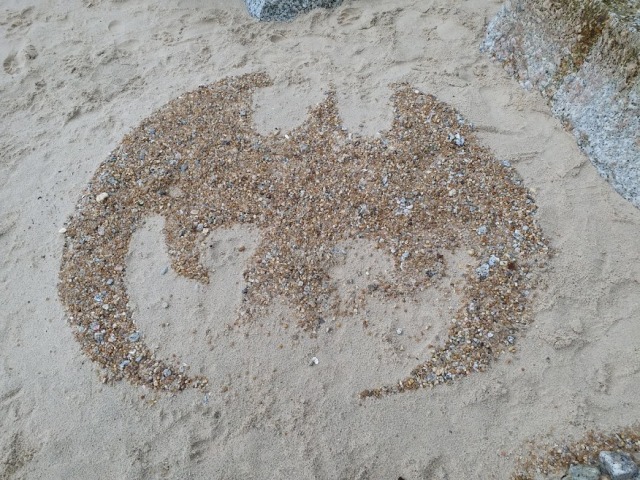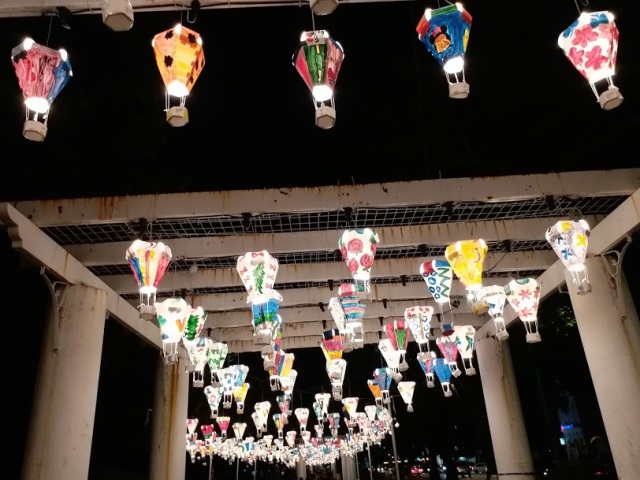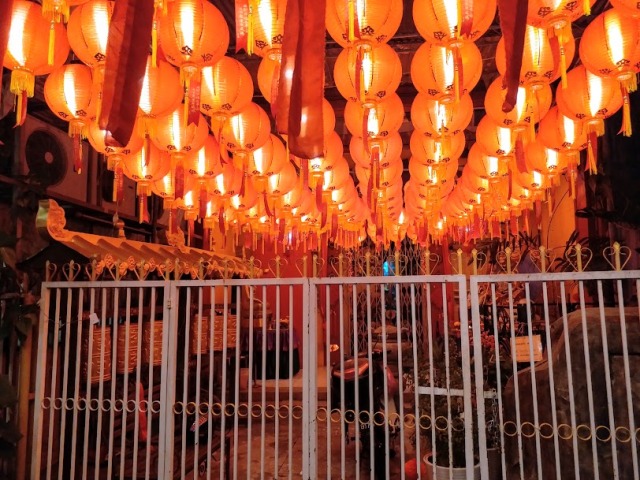Day 1 – Entry in Penang
Almost everyone told that don’t visit Penang during Chinese New Year. It will be crowded, you’ll feel stuffy and CNY, as Chinese New Year is popularly known in Malaysia, is ‘just not the right time’ to visit Penang as most of the Chinese go back to meet their families in Penang. Honestly, I don’t understand this logic. The character of any city, town or village is because of its people. Why should I visit an empty street? Or a monument which is not bubbling and bursting with the energies of thousands of unknown people visiting it? What is fun if there is no crowd? Of course, this is debatable and to each his/her own, yet visiting Penang during CNY was the best decision as a traveler that I made and on-boarded fellow travelers too, on this plan. As against to my previous planning I was not traveling alone but with five more travelers; the more the merrier.
We had planned Penang for 4 days which is a good balance. An ideal balance would be a week in Penang. Penang doesn’t have the vibe of a fast city. The city sets its own pace. It is a place where you can escape time; beaches, arts, temples, mosques, streets every place has a character of its own setting its own pace. One can release the stiffness of life in Penang air and enjoy the carefree moments it offers.
We had booked the bus for Penang. One can’t help but notice how efficient the bus service in Malaysia is. Our bus operator was Billion Stars and I would give it a billion stars. The bus service was fantastic. TBS or the bus terminal in Kuala Lumpur can give competition to its American and European counterparts and win hands down. I have traveled in buses in America and Europe and I can say with confidence that Malaysian bus service is by far the best. The bus terminals were like airports which had big TVs running the schedule of arrival and departure of the buses. The bus network of Malaysia is quite strong as there are more than 160 bus operators along with more than 6k+ bus routes. Seats can be paid for and reserved either directly with operators or via online sites such as www.easybook.com . We did an online booking. For 6 persons we paid 712RM, to and fro journey which roughly is 175 USD or 29 USD approx. per person! Remember, most long-distance buses have air-con, often turned to frigid, so bring a sweater! The seats are comfortable with leather upholstery, ample of leg space (one of our fellow travelers was around 6 feet), recliner and leg support. The distance between Kuala Lumpur and Penang is 357.7 KM which the bus covers in 5 hours, this includes taking a single break. Hence, if you are wondering whether traveling via bus to Penang is safe then the answer is yes. You can also explore trains and flights but buses are dirt cheap with competitive facilities. Yes, the bus service gives competition to flight and train journey.

We reached Sungai Nibong, bus terminal at around 2:30 PM and booked a grab for our beach house. Grab operates in Penang and is one of the frequently used modes of commutation. Our Grab driver was Mr. Nathan who gave us some sound advice regarding the places to visit and also whether renting a car is a good option. Per his advice, which we agreed on, renting a car is not a good idea as car parking is a problem in general. In his words, “Don’t go and find the problem, la.” He gave us a glimpse of Penang’s history and its multiculturalism. Penang owes its rich culture and architectural splendor to the various races that found a home on the island during its years as a port. Penang’s modern history began with the establishment of George Town by Francis Light and was a part of British crown colony. Mr. Nathan’s knowledge about Penang was actually his undying proclamation of love for the city. He was courteous and good-natured. He stopped at a nearby Indian restaurant so we could pack lunch for ourselves and didn’t even charge us waiting charges.
At 3:30 PM we were in front of our beach house. We stayed in Oiduts Boutique Townhouse situated in Batu Ferringhi. One of the most amazing parts of the beach house were its walls which were made of glass. So the house looked quite big. We had a kitchen with an electric burner, utensils, and refrigerator, in short, all the amenities were present in case we opted to cook. The ambiance of the house was old fashioned yet elegant, lazy yet soft and intellectual yet cheerful (yes, there was a big bookshelf which had primarily architecture books but you could still find something to suit your taste). Oiduts is an inexpensive yet charming beach house to stay. It has a dining table for 6, a book rack for the nerds, a TV room and a WB Yeats Poem, tread on my dreams softly. I couldn’t have asked for more. The staircase to our room was circular which in a way fulfilled my childhood dream to have a circular staircase to my room. You can see the pictures and decide for yourself at the link

The nearest beach to our house was Miami Beach. The distance between the beach and the bus stop and the house was 2 minutes. Pantai Miami (as known locally) is clearly segregated by rocky promontories on both ends that separate it from Batu Ferringhi. There are no fashionable cafés or outlets, only a few basic food stalls selling snacks. Do try the lip-smacking combination of sweetcorn, butter, condensed milk, and corn flakes. There are no adjectives to describe how it tastes, if heavenly was a thing then it would be this. I love beaches. It is a world of limitlessness and imagination. The possibility of being one with nature is captivating. I can sit on the rocks and talk to the waves endlessly. Every wave is an unknown person to whom I can talk fearlessly. Even before the wave can decide or judge me, it disappears and its unknown counterpart acts as an unwavering replacement fully aware of its temporary substitution status. Nature is the best secret keeper. It will never let you down.

An unknown person had created a Batman logo. His mastery over it was commendable.

After frolicking across the rocky beach it was time to say goodbye so the weary travelers could grab some rest before they started exploring the nightlife.
A traveler crawls on its stomach just like a soldier. Malaysian cuisine is one of the most colorful cuisines in the world imbibing character from Malay, Chinese and Indian races. How I wish I could be open to tasting cuisines from across the world! I am a vegetarian and there is no scope to yo-yo from that position. Luckily for me, the group was vegetarian. Although our vegetarian status restricts us from experimenting, yet we faced no difficulty as Penang has Indian restaurants which do provide veg food. We explored Woodlands and Anand Bhawan. I would be partial towards Anand Bhawan only because of the luscious ‘Ghee Thosai’ offered there.
After eating to our heart’s content we decided to explore the streets in Little India. We walked towards the garden opposite to the town hall which had a line of lanterns, made by kids, hanging to celebrate the 2018 hot air balloon festival. The string of glowing lanterns looked like magic. It was a piece of happiness hanging on the string made by the kids. The vibe from the lanterns was positive and glowing. It made my day. There was nothing ingenious about those lanterns except that the little hands which made them were full of joy which got transferred when the lanterns were being made. I could spend the entire night walking under it and still not be contented with the gratification it brought.

It was past 10 and the garden was bubbling with kids, parents, teenagers, travelers, tourists, etc. The fancy stuff hawkers sell is worth mentioning. There was an electric tiara with flowers intertwined, a miniature airplane made of Thermocol which had lights on its tail and wings, bubbles, and I must have definitely missed mentioning others. This garden was ‘long lost fun found’. I bought for myself a tiara and the effect was picture worthy.

Our next destination was the famed ‘Chulia Street’. En route Chulia Street we admired the red lanterns which were hung to celebrate CNY. Usually, red lanterns are hung outside the doors to ward off bad luck. Legend has it that it all began with the Nian, a ferocious beast that would terrorize villagers on the New Year, eating crops, livestock, and even children. But villagers learned that this half bull with a lion head was afraid of three things: fire, noise, and the color red. Nian was defeated, and from then on, the color red was considered to bring good luck and good fortune to all.

Chulia Street, Georgetown = Pubs + Foreigners + Food Paradise + History in motion. Thanks to Mr. Nathan, I got to know a lot about Chulia Street. Originally, the street was named Malabar Street, after the Indians from Malabar who moved to George Town. The term ‘Chulia’ is a corruption of ‘Chulier’, which was once used to refer to the Indians who originated from the coastal areas of Tamil Nadu in India. That particular region was formerly part of the Chola Kingdom, hence the term ‘Chulier’. The early inhabitants were Muslims, and they subsequently built a number of religious buildings along Chulia Street, such as the Nagore Durgha Shrine and the Noordin Family Tomb. However, while the population of Indian Muslims along Chulia Street began to decline in the late 19th century, ethnic Chinese were simultaneously moving into the road, thus contributing to Chulia Street’s multicultural character. The decline in the Indian population was because Indians wanted to move back to India. Chinese in those days couldn’t send money to China. So when Indians sold their belongings, Chinese purchased, thus enabling Indians to take a large sum of money back to India thereby resulting in increased Chinese settlement. If you are a budget tourist do tread through the lanes of Chulia because it has a lot of budget hostels and guesthouses.
We didn’t have any drinks in any of the pubs in Chulia Street nor did we stop to eat anything. It was lingering across the street trying to figure out the magnetism with which it attracts tourists and travelers alike. The incomplete street visit was a promise to come again. I would definitely go back to Chulia Street, I had made a promise with myself then and there. Until then, dear street, just wait for me to come back.
































